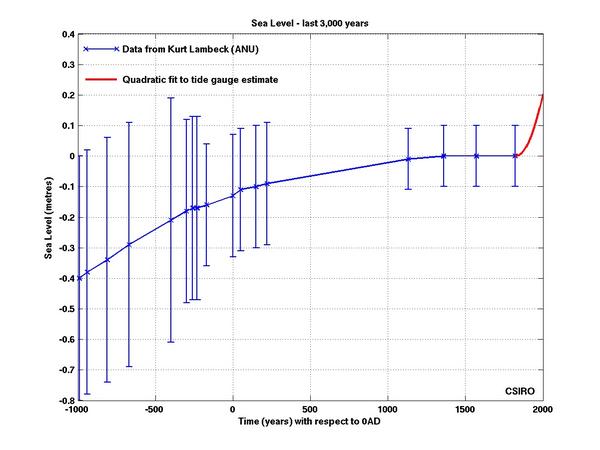Climate Models: Learning From History Rather Than Repeating It
Posted on 26 August 2010 by gpwayne
Climate models are mathematical representations of the interactions between the atmosphere, oceans, land surface, ice – and the sun. This is clearly a very complex task, so models are built to estimate trends rather than events. For example, a climate model can tell you it will be cold in winter, but it can’t tell you what the temperature will be on a specific day – that’s weather forecasting. Climate trends are weather, averaged out over time - usually 30 years. Trends are important because they eliminate - or "smooth out" - single events that may be extreme, but quite rare.
Climate models have to be tested to find out if they work. We can’t wait for 30 years to see if a model is any good or not; models are tested against the past, against what we know happened. If a model can correctly predict trends from a starting point somewhere in the past, we could expect it to predict with reasonable certainty what might happen in the future.
So all models are first tested in a process called Hindcasting. The models used to predict future global warming can accurately map past climate changes. If they get the past right, there is no reason to think their predictions would be wrong. Testing models against the existing instrumental record suggested CO2 must cause global warming, because the models could not simulate what had already happened unless the extra CO2 was added to the model. Nothing else could account for the rise in temperatures over the last century.
Where models have been running for sufficient time, they have also been proved to make accurate predictions. For example, the eruption of Mt. Pinatubo allowed modellers to test the accuracy of models by feeding in the data about the eruption. The models successfully predicted the climatic response after the eruption. Models also correctly predicted other effects subsequently confirmed by observation, including greater warming in the Arctic and over land, greater warming at night, and stratospheric cooling.
The climate models, far from being melodramatic, may be conservative in the predictions they produce. For example, here’s a graph of sea level rise:

Sea level change. Tide gauge data are indicated in red and satellite data in blue. The grey band shows the projections of the IPCC Third Assessment report (Copenhagen Diagnosis 2009).
Here, the models have understated the problem. In reality the events are all within the upper range of the model’s predictions. There are other examples of models being too conservative, rather than alarmist as some portray them. All models have limits - uncertainties - for they are modelling chaotic systems. However, all models improve over time, and with increasing sources of real-world information such as satellites, the output of climate models can be constantly refined to increase their power and usefulness.
Climate models have already predicted many of the phenomena for which we now have empirical evidence. Climate models form a reliable guide to potential climate change.
Note: This post is the Basic version (written by Graham Wayne) of the skeptic argument "Models are unreliable". We're currently going through the process of writing plain English versions of all the rebuttals to skeptic arguments. It's a big task but many hands make light work. If you're interested in helping with this effort, please contact me.































 Arguments
Arguments
























 0
0  0
0 If this graph is right, the sea level started to rise at a steady pace almost 100 years "too early". That is, long before the use of hydrocarbons started to explode around the middle of the 1900's.
So, maybe the proposed reason for the sea level increase (i. e. CO2) is debatable?
If this graph is right, the sea level started to rise at a steady pace almost 100 years "too early". That is, long before the use of hydrocarbons started to explode around the middle of the 1900's.
So, maybe the proposed reason for the sea level increase (i. e. CO2) is debatable?

 The concern is for that 70 meters of sea level rise locked up in the Greenland and Antarctic ice sheets, the same ice sheets that are exhibiting accelerated melt, and the 1 to 2 meters of sea level rise anticipated for this century.
The concern is for that 70 meters of sea level rise locked up in the Greenland and Antarctic ice sheets, the same ice sheets that are exhibiting accelerated melt, and the 1 to 2 meters of sea level rise anticipated for this century.







Comments